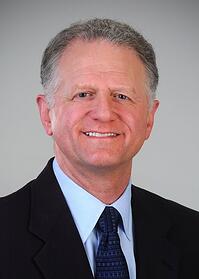 Earlier this year, we published the Advanced Energy Now 2015 Market Report. That report showed that the U.S. market for advanced energy products and services grew 14 percent in 2014, five times as fast as the U.S. economy overall. At just under $200 billion in revenue, advanced energy is now bigger than the U.S. airline industry, equal to the pharmaceutical industry, and nearly as large as consumer electronics. That is big news. Just as important is what’s driving the growth of the advanced energy market in this country.
Earlier this year, we published the Advanced Energy Now 2015 Market Report. That report showed that the U.S. market for advanced energy products and services grew 14 percent in 2014, five times as fast as the U.S. economy overall. At just under $200 billion in revenue, advanced energy is now bigger than the U.S. airline industry, equal to the pharmaceutical industry, and nearly as large as consumer electronics. That is big news. Just as important is what’s driving the growth of the advanced energy market in this country.
Looking across the market and policy landscape, I see five drivers of market growth for advanced energy companies, now and into the future.
- Reducing Carbon Emissions. EPA’s Clean Power Plan won’t be final until later this summer, but the draft rule is already shaping markets for energy investment. For reducing carbon emissions from the electric power sector, advanced energy is the answer. Energy efficiency and demand response. Low-emission natural gas generation. Zero-emission renewable energy. Advanced grid technologies and energy storage. As described in our Advanced Energy Technologies for Greenhouse Gas Reduction report, these are the measures states can use to meet EPA standards and modernize their electric power systems for the 21st century. AEE member companies are ready to deliver their solutions on a large scale. That means revenue growth for the industry and economic growth for the states that put advanced energy to work.
- Customer Choice. Among Fortune 100 companies, 60% have greenhouse gas reduction or clean energy goals. So do 43% of the Fortune 500. Corporations like Apple, Google, and Dow Chemical are installing on-site renewable energy where they can and procuring renewable power offsite when they can’t. Last year, over 23% of the wind power contracts signed in 2014 were with corporate buyers and other non-utility groups, including universities, military installations, and units of government. These contracts between wind developers and commercial and industrial companies, governmental agencies, and educational institutions totaled more than 1700 MW in 2014. In some parts of the country, however, it is difficult if not impossible for a buyer to enter into a contract to purchase electricity from a specific renewable energy facility. We call this impediment to transactions between willing buyers and willing sellers a market failure. We are working to take down these market and regulatory barriers – and let the customers choose the renewable energy they want.
- State Leadership. For years, individual states have taken the lead on renewable energy and energy efficiency standards. These states have set an example, driving the deployment of advanced energy technologies and demonstrating what is possible and beneficial to customers. That state leadership continues. In California, Gov. Brown has proposed a bold set of new goals: 50 percent renewable energy, 50 percent more efficient buildings, 50 percent less use of petroleum by 2030. New York is taking a leadership position in utility regulatory and business model reform, with its Reforming the Energy Vision (REV) initiative and Public Service Commission Proceeding. North Carolina is a leader in solar power, and Arkansas is making strides in energy efficiency – and building an industry. Many other states are stepping up, setting goals, and creating a prosperous economy powered by secure, clean, affordable energy.
- Local leadership. We see the same kind of leadership in major cities around the country. Mayor Bill DiBlasio made a commitment to reducing the greenhouse gas emissions of New York City 80 percent by 2050. With three-quarters of New York’s greenhouse gases coming from the energy used to heat, cool, and light buildings, that commitment translates into a massive agenda of building retrofits. But it’s not just the Big Apple. More than 1,000 mayors across the country have set specific goals for sustainability and carbon reduction in their cities. Mayors are also leading the way in applying advanced information and communication technology to their infrastructure – water as well as energy. This is the Smart Cities movement, and it’s taking hold in cities from San Antonio to Pittsburgh. Navigant Research estimates that that investment in smart city technology infrastructure will total $108 billion in this decade.
- Jobs. For policymakers, the industries that matter most are the ones that create jobs. While there are no definitive national numbers, a variety of state studies have shown that advanced energy companies are significant employers – and growing – with states that have embraced advanced energy policies gaining the most jobs. California has more than 431,000 advanced energy jobs – 2.4 percent of the state’s workforce, half-again as many as are employed in the state’s marquee motion picture, radio, and television sector. With employers reporting plans to hire at a 17 percent clip in the coming year California is well on its way to more than half a million people employed in the advanced energy industry. With 88,000 advanced energy workers, Massachusetts matches California in the percentage of its workforce involved in advanced energy. Advanced energy employment in that state has grown 47 percent since 2010. Illinois just topped 100,000 clean energy jobs, up nearly 8 percent from the year before.
These are the drivers that make the future bright for advanced energy companies, and for an economy powered by advanced energy. AEE will be working with policymakers at all levels – federal, state, and local – to keep the momentum going.